For a long time, cabbage was - next to bread - the most important food. Especially in winter, cabbage provided people with important nutrients. In addition, cabbage was considered a medicinal substance. Cabbage juice and cabbage soup were supposed to help people with illnesses such as gout or joint pain. But it was also used to treat digestive problems, colic or duodenal ulcers. People also used cabbage externally, as a poultice made from rolled or pressed cabbage leaves, to treat ulcers, wounds, diseased joints and skin problems. The red colour comes from anthocyanins, which are said to have a positive effect on inflammations.
All about red cabbage
Did you know that people in the Middle Ages already had red cabbage on their menu? But that's not all you can learn about red cabbage in this section. We get to the bottom of the most important questions about red cabbage - for example, when farmers harvest it. We take you on the journey from the field into the packaging. And of course, you'll also get some culinary impressions and recipe inspiration. Follow us into the world of red cabbage.

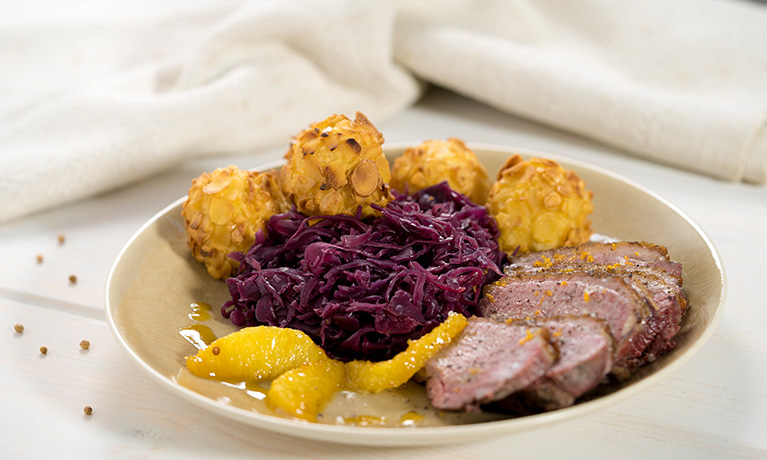
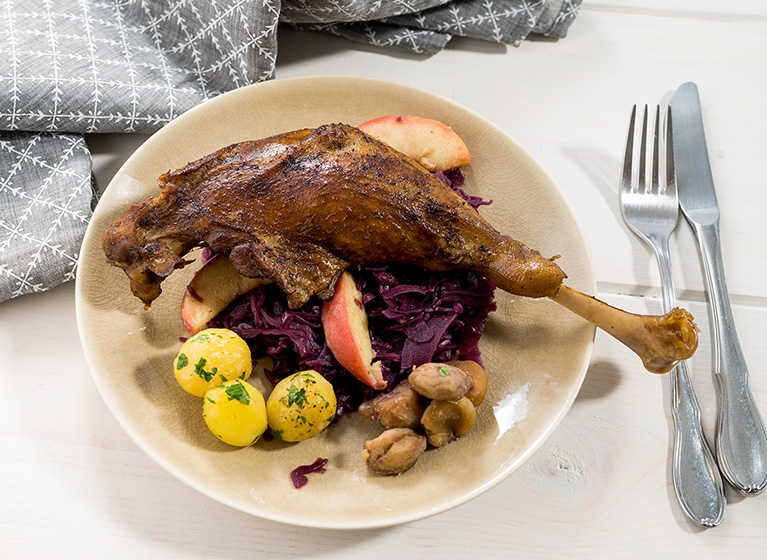
Prologue
Imagine Christmas in Germany in any house: Candles are glowing, the fireplace (if there is one) is crackling. The pots are rattling in the kitchen and the children are running around the house. Either because they can hardly stand the excitement or because they are trying out their presents. The family visit arrives: with kisses, lots of hugs and the obligatory praise of the Christmas tree ("How beautiful it is!"). A comforting feeling. Love and cosiness are in the air (sometimes hectic too) - and the scent of pine branches.
Then there is the smell of cinnamon. And Christmas cookies. And roast or duck (probably the most traditional Christmas meal in Germany - special dishes on special days). And ... red cabbage. Of course. For many people, red cabbage is as much a part of Christmas as the Christmas tree and presents. Red cabbage simply tastes festive and for some, Christmas only begins when the red cabbage slowly sneaks into the Christmas bouquet of scents that spreads around the house. Indeed, for many, red cabbage is an autumnal-winter dish. But red cabbage can be a pleasure all year round.

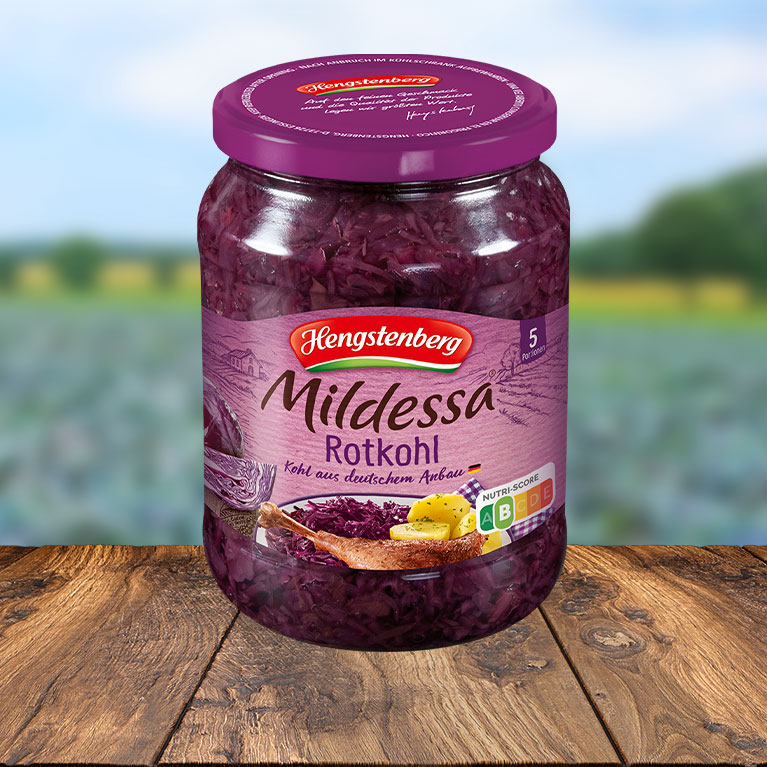

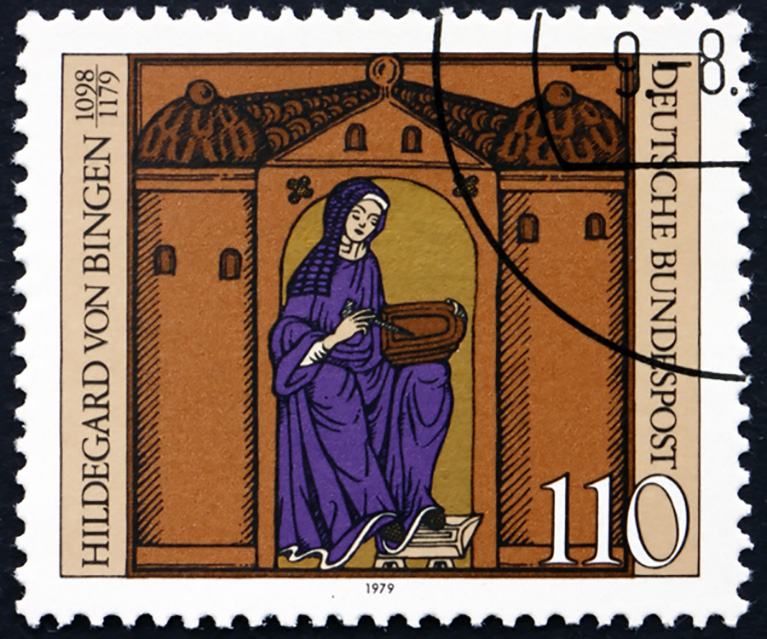
The history of red cabbage
Wild cabbage originates from the Mediterranean region and the European Atlantic coast - from today’s countries of England, Ireland and France. The ancient Greeks and Romans already knew several varieties of cabbage, such as kale, but not yet a type with closed leaves like red cabbage. Red cabbage is a cultivated - i.e. bred - form of cabbage, that is known to have existed in Europe from around the Middle Ages.
Since the Middle Ages, red cabbage has also been cultivated in Germany. Red cabbage was first mentioned in the 12th century, in the writings of the polymath Hildegard von Bingen (1098-1179). She distinguished red cabbage "Rubeae caules" from white cabbage used for Sauerkraut.

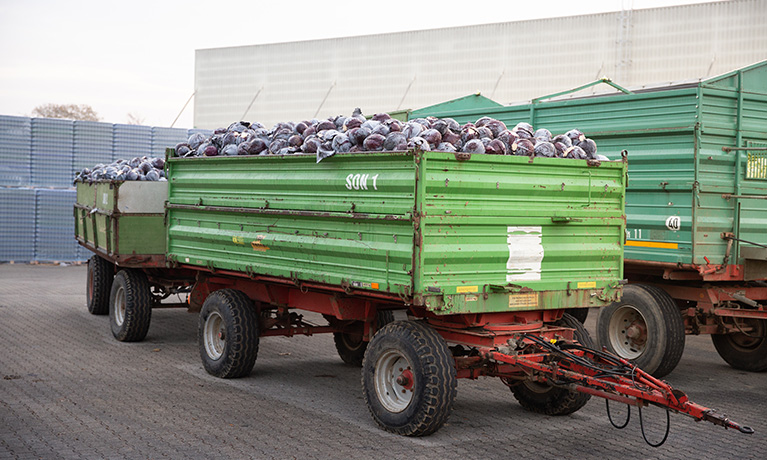
From the field to the jars, tins and pouches: red cabbage cultivation
By the end of April, beginning of May, the seeds are planted in the field, or more precisely in the seed furrow. From now on, the red cabbage grows, forms leaves and develops. In the first week of June, the red cabbage starts to form its head. The red cabbage's core leaves close and the cabbage grows steadily from the inside out until autumn. In autumn, i.e. in October and November, the red cabbage is ready for harvesting, for which reason it is also called winter cabbage.
How does the red cabbage get into jars, tins and pouches?
The harvested red cabbage makes its way to further processing. After the first quality control, the non-edible part of the stalk is removed. The heads are then freed from outer leaves, thinly sliced, mixed with other ingredients - depending on the recipe - and gently cooked. After filling into jars, pouches or tins, a final gentle heating (pasteurisation) takes place.
By the way: red cabbage and sauerkraut from Hengstenberg come from German cultivation. In line with trade practice, we do not add any preservatives during production process.

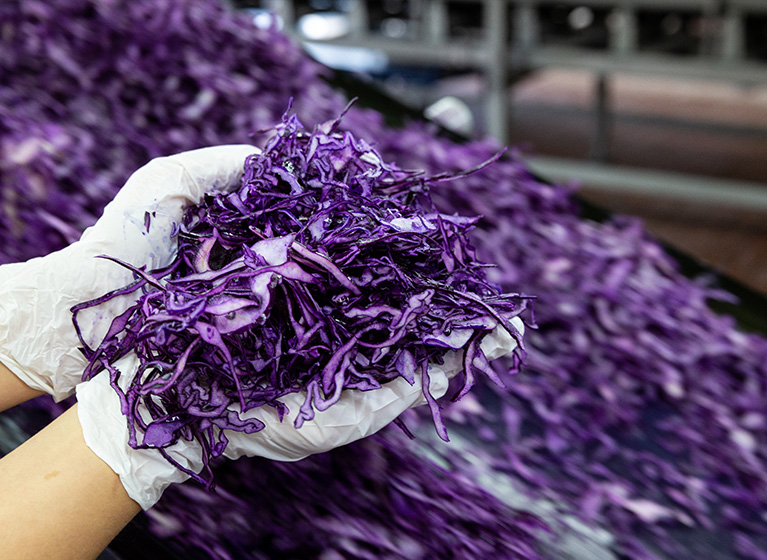
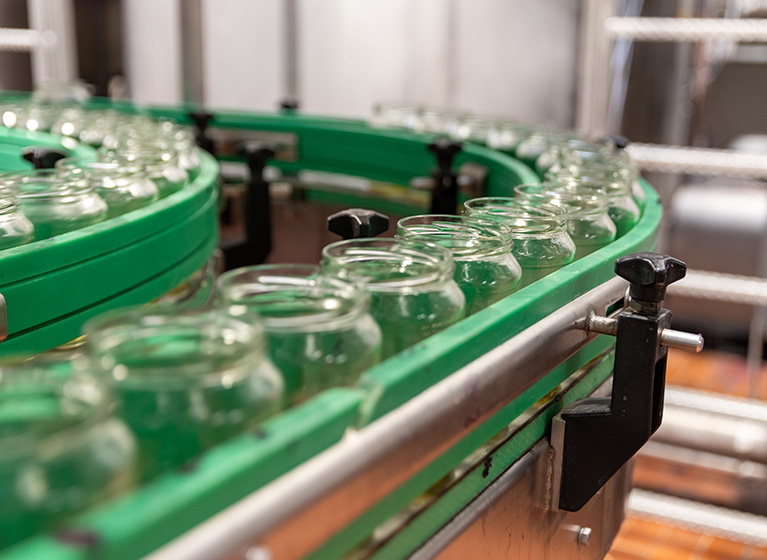

Fresh red cabbage is low in calories and has many vitamins and nutrients
Fresh red cabbage contains no fat in its raw state and has just 31 kilocalories per 100 grams. The red cabbage is therefore one of the particularly low-calorie foods. In fresh salads, it not only provides a beautiful colour contrast, but also has a high vitamin C content. 100 grams of red cabbage contain 55 milligrams of vitamin C, more than lemons and oranges. To meet the daily requirement of vitamin C, 200 grams of raw red cabbage is enough.
Red cabbage provides vitamin E, protein and minerals
Red cabbage contains vitamin E, which is said to support the immune system and counteract inflammation, and vitamin K, which is important for blood clotting. It also contains plenty of vegetable protein and important minerals such as calcium, iron and magnesium. Moreover, there are secondary plant compounds in red cabbage that are said to have a positive effect on cell protection.

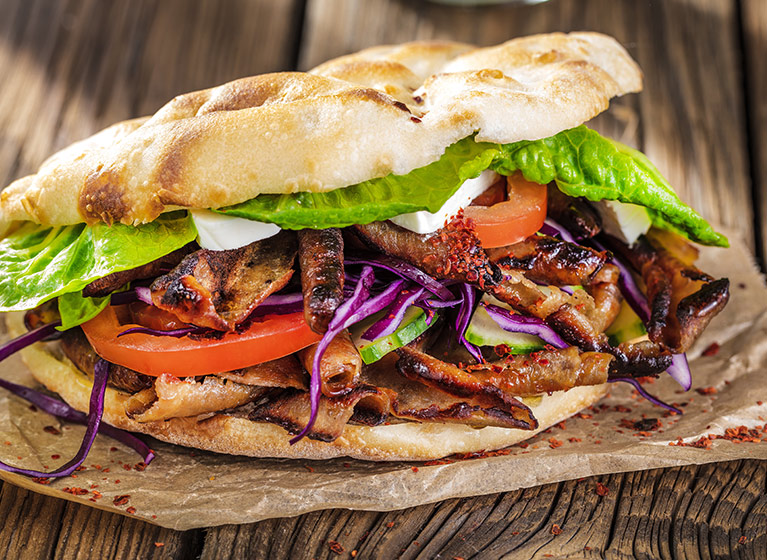
Red cabbage is a must in the doner kebab („Döner“)
The Döner Kebab enjoys great popularity in Germany. Döner Kebab is Turkish and means "rotating grilled meat". Many like to serve it with side dishes such as rice, fries, bulgur or in a flatbread "pide". In addition to the veal or chicken, the pita bread also contains various salads, vegetables, cheese or spicy sauces. A particularly popular filling is cabbage salad. Both white cabbage and red cabbage are part of a real kebab. The red cabbage is then raw and seasoned with salt, pepper and oil.
By the way, the Döner Kebab in pita bread is said to have been invented in 1971 by Mehmet Aygün in Berlin-Kreuzberg, Germany.

Austria: “Martinigansl” with red cabbage and dumplings on St. Martin's Day
When people in Austria celebrate St. Martin on November 11, there is St. Martin's singing, the St. Martin's procession and the traditional St. Martin's goose dinner. In Austria, it's called "Martinigansl" and it includes roast goose, red cabbage ("Blaukraut" - as Austrians call it) and dumplings.

Bohemian style red cabbage
Cabbage enjoys great popularity in Czech cuisine. In the Czech Republic, many like to eat sauerkraut. They ferment not only white cabbage but also red cabbage and call it Kysané zeli, which means sauerkraut. Fermented red cabbage is a speciality of the Jizera and Giant Mountains. Roast meat with bread dumplings and red cabbage is also typically Bohemian.




